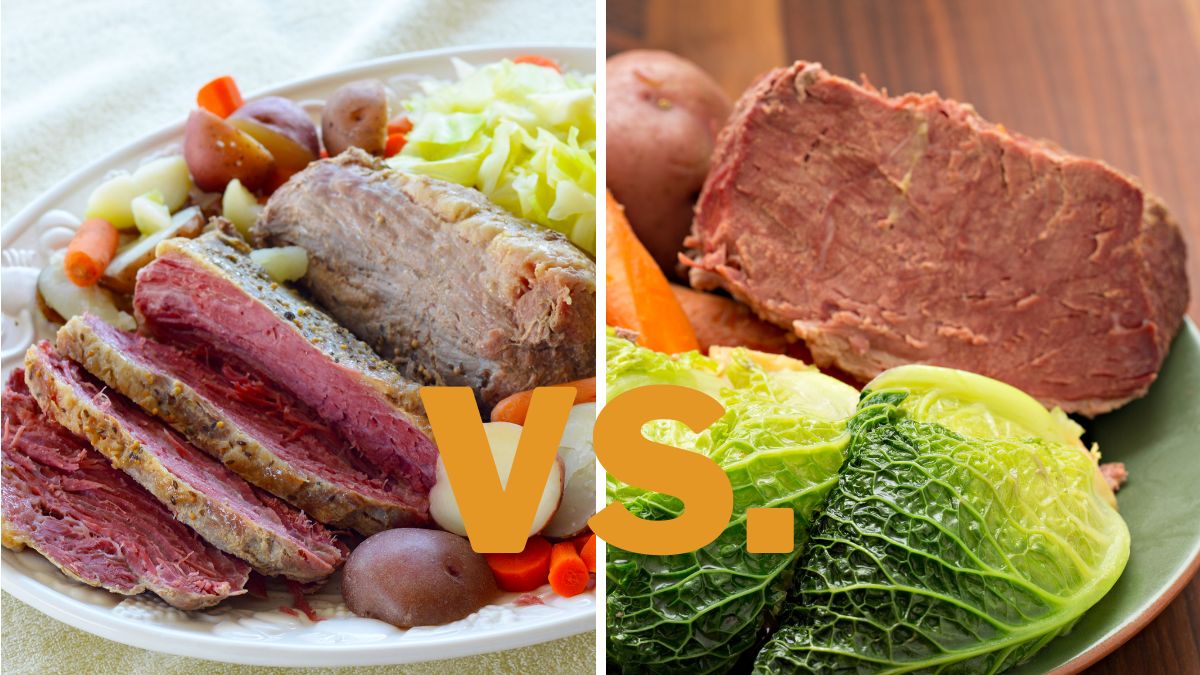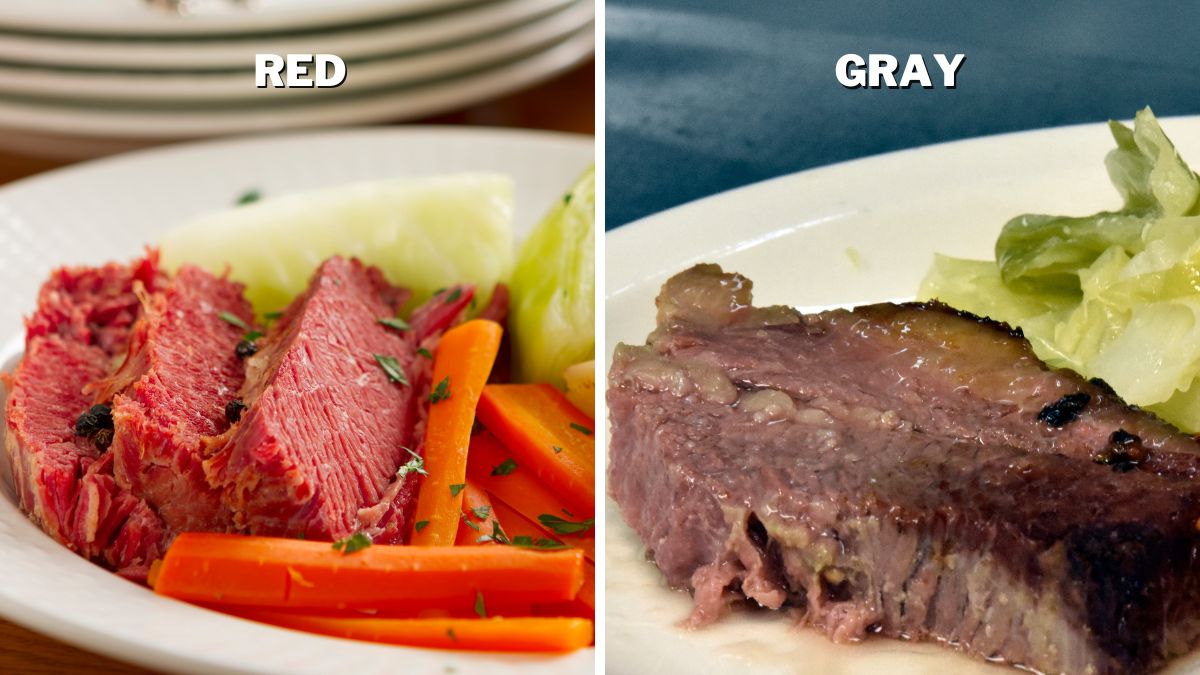Red vs. Gray Corned Beef: Differences & Which Is Better?

Corned beef is a staple of any St. Patrick’s dinner. It is a long-standing tradition to serve this tender meat with cabbage, and even though you can find this recipe throughout the U.S., New England has its way of cooking it. This meal can be red or gray, but what makes the difference?
Red and gray corned beef differ in color, taste, and texture. The history of these meals is also different. Still, both of them are beloved and praised not only as traditional food but also as gourmet meals.
The preparation of corned beef requires time and patience, but the final result is more than rewarding. If you are learning the ropes of traditional Irish-American cuisine and are eager to find out how to prepare each of the two variants of this dish, you may find information in the following text.
What Are the Differences Between Red and Gray Corned Beef?
Red and gray corned beef share a few similarities. For instance, both are boiled meals, usually made from brisket (although gray corned beef can be made from rumps or round cuts) and take hours to cook. However, they differ in visual appearance, taste, texture, and curing ingredients.
Here is a more detailed look into those differences.
Origin and Popularity
While red corned beef is a popular meal around St. Patrick’s Day all across the United States, gray corned beef is almost exclusively a tradition of New England. The gray corned beef is also known as Boston Irish-style or Old World-style beef, while red is New York-style.
Gray corned beef originates from Europe, while red was invented somewhere around the 19th century.
Preparation
To prepare red corned beef, you will need ingredients for curing brine with pickling spices such as table salt, water, brown sugar, black peppercorns, coriander, a few bay leaves, garlic cloves, and pink salt.
Pink salt is an essential ingredient for this type of corned beef because it preserves its red-pinkish color. It is sodium nitrate, which breaks into nitric oxide while cooking and binds with the iron atom in myoglobin – the protein that makes the meat red. That way, the meat stays pink even after hours of cooking.
Curing brine for gray corned beef usually contains only salt and pepper, but you can also add some garlic, onion, bay leaves, or some other herbal spices to make it aromatic. Since it doesn’t include any additives or preservatives, many consider it healthier.
Aside from that, red meat takes at least 5 days to cure and 5 to 6 hours of cooking until it becomes tender. The gray type usually requires less time in the brine, while the cooking time is 3 to 4 hours.
Color
Color is the most obvious difference between the two types of corned beef. As mentioned earlier, the main difference between red and gray corn beef is pink salt. It is a sodium nitrite that helps preserve the pink color of the meat in the myoglobin by a simple chemical reaction.
Gray corned beef doesn’t contain any preservatives, so the color of the meat forms naturally while cooking.
Taste and Texture

The two variants of corned beef also differ in taste and texture. Red corn beef usually has a strong salty taste. After laying in the brine for days, the meat absorbs all seasonings, becoming aromatic and flavorful.
Gray corned beef does not include as much seasoning, meaning it will develop a mild, almost sweet taste. The lack of sodium nitrite makes it less salty than red.
Moreover, it has a soft texture that melts in your mouth, while red corn beef stays a bit tougher. This is a result of adding sodium nitrite and several days of curing.
Serving Style
Both red and gray corned beef is traditionally served with boiled vegetables – carrots, potatoes, and cabbage. To shorten the procedure, you can cook vegetables together with meat, adding them 15-30 minutes before taking the pot off the stove.
If you are unsure how long it takes to boil vegetables, cooking them separately from the meat is a better option. Just throw in carrots and potatoes first, and when they start softening, add cabbage. Once the vegetables are soft, I usually transfer them to a plate, slice the corned beef against the grain, and lay it over the vegetables.
Thin and tender slices of red corned beef are also material for corned beef sandwiches with mustard, horseradish sauce, and different types of cheese. You can use the gray corned beef in the sandwich as well, yet you will have to make some small adjustments.
Because the texture of this beef is so soft, you might end up with gooey sandwiches if you use bread straight from the package. So, it is best to toast or bake your bread before making a sandwich. Red corned beef has a firmer structure, so toasting might not be necessary.
Which Is Better, Red or Gray Corned Beef?
While gray corned beef is healthier and softer, red corned beef is praised for its more intense flavor. I have tried both of the recipes and found them equally delicious. Still, which one is better for you depends on your personal preferences.
If you like mild, somewhat sweet, and incredibly tender meat, gray corned beef might be the right choice. However, if you are more into flavorful, beautifully pink thin slices of meat, consider making red corned beef.
